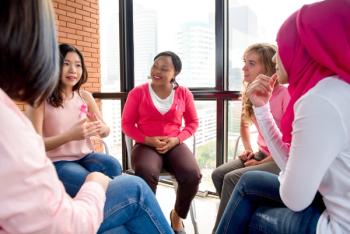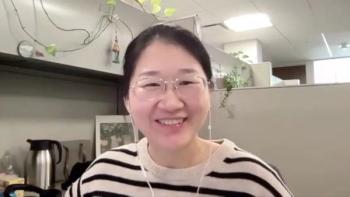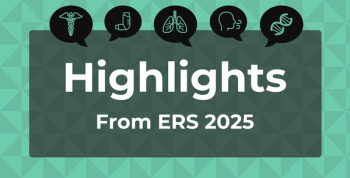
ALL Disparities, Treatment Gaps: AYA Patients Face Unique Challenges
Key Takeaways
- Adolescent and young adult patients with acute lymphoblastic leukemia (ALL) experience significant survival disparities, with non-Hispanic Black and Hispanic patients having worse 5-year overall survival rates than non-Hispanic Whites.
- Despite advancements, many patients with B-cell ALL relapse after 2 therapy lines, indicating a need for more effective third-line treatments.
Adolescent and young adult (AYA) patients with acute lymphoblastic leukemia (ALL) face significant survival disparities and unmet needs for effective third-line treatments, highlighting urgent care gaps.
For adolescent and young adult (AYA) patients with
Disparities in Outcomes
Pediatric ALL has a 5-year OS of more than 90%, but that survival rate declines dramatically in the AYA population, which accounts for 80% of ALL deaths. In this study, the researchers sought to identify the impact of race, ethnicity, and sociodemographic disparities on the OS of AYAs with ALL.
They analyzed 6655 AYA patients with ALL using the Surveillance, Epidemiology, and End Results database of all patients with an ALL diagnosis between 2000 and 2021. The data showed non-Hispanic Black and Hispanic AYA patients experienced statistically significantly worse 5-year OS compared with non-Hispanic White patients (HR, 1.6; 95% CI, 1.38-1.9; P < .001; and HR, 1.4; 95% CI, 1.31-1.50; P < .001). For all races, the 5-year OS rates were:
- 65% for non-Hispanic Asian or Pacific Islander
- 64% for non-Hispanic White
- 56% for Hispanic
- 51% for non-Hispanic American Indian/Alaska Native
- 50.5% for non-Hispanic Black
There were no statistically significant differences observed when stratifying by income, gender, or urban vs rural location.
“It is important to better understand the disparities that impact the AYA population, whom may be particularly vulnerable to social factors impacting their care,” the researchers concluded.
Need for Effective Third-Line Therapies
Despite advancements in B-cell ALL (B-ALL) treatment, including blinatumomab and chimeric antigen receptor (CAR) T-cell therapy, a significant proportion of patients face relapse after 2 lines of therapy, highlighting a need for more effective later-line therapies.
Using the Flatiron Health Research Database from January 2014 to March 2024, the researchers identified 388 patients who initiated first-line therapy. Of these patients, half (n = 195) went on to initiate third-line treatment.
Although the largest segment of patients who initiated third-line therapy were between the ages of 41 and 64 years (43%), a third (33%) of patients were AYAs between the ages of 12 and 40 years. Furthermore, 19% were aged 65 to 74 years, and 5% were older than 75 years.
The most common third-line treatments were multiagent chemotherapy (n = 155), followed by blinatumomab-containing regimens (n = 71) and inotuzumab-containing regimens (n = 56). Just over a quarter (27%) of patients receiving blinatumomab in the third-line setting were undergoing retreatment after prior blinatumomab exposure in a first- or second-line setting.
Only 4% of patients received CAR T-cell therapy as a third-line treatment. There are currently 3 CAR T therapies available in the US for B-ALL: tisagenleucel was approved in 2017, brexucabtagene autoleucel in 2021, and obecabtagene autoleucel in 2024.3-5
These findings underscore a major unmet need for effective therapies in the third-line setting for B-ALL, particularly given that half of adult and AYA patients initiating frontline treatment eventually require third-line therapy.
References
1. Lopez E, Cheema A, Taveras Alam S. Survival disparities in patients with acute lymphoblastic leukemia: a focus on young adult and adolescent patients. Presented at: ASCO 2025; May 30-June 3, 2025; Chicago, Illinois. Abstract e18529.
2. Geyer M, Liedtke M, Shetty V, et al. Unmet need in adults and adolescents and young adults (AYAs) with B-cell acute lymphoblastic leukemia (B-ALL) in the US following a second relapse. Presented at: ASCO 2025; May 30-June 3, 2025; Chicago, Illinois. Abstract e18510.
3. Joszt L. FDA approves tisagenlecleucel, the first CAR-T cell therapy in the United States. AJMC®. August 30, 2017. Accessed June 3, 2025.
4. FDA approves brexucabtagene autoleucel for relapsed or refractory B-cell precursor acute lymphoblastic leukemia. News release. FDA; October 1, 2021. Accessed June 3, 2025.
5. Joszt L. FDA approves obe-cel for R/R B-cell acute lymphoblastic leukemia. AJMC. November 8, 2024. Accessed June 3, 2025.
Newsletter
Stay ahead of policy, cost, and value—subscribe to AJMC for expert insights at the intersection of clinical care and health economics.













































